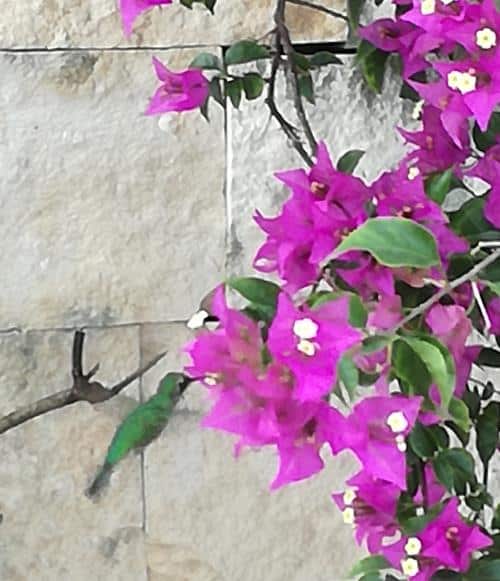Bougainvillea
Bougainvillea are popular ornamental plants in most areas with warm climates.
are evergreen where rainfall occurs all year, or deciduous if there is a dry season.
Bougainvillea are relatively pest-free plants, but they may suffer from worms, snails and aphids. The larvae of some Lepidoptera species also use them as food plants, for example the giant leopard moth (Hypercompe scribonia).Although it is frost-sensitive Its high salt tolerance makes it a natural choice for color in coastal regions.
is an evergreen, climbing vine, with thorny stems and tiny trumpet shaped white flowers, usually appearing in clusters surrounded by three showy bright magenta-rose papery bracts. The leaves are ovate and dark green.Shrubs or small trees, sometimes climbing. Branches spiny. Leaves alternate, petiolate, leaf blade ovate or elliptic-lanceolate
B. glabra en B. spectabilis. Het onderscheid tussen deze twee is simpel: de soort glabra heeft onbehaard blad; spectabilis heeft behaarde bladeren. Beide hebben doornen. Onderling zijn de soorten ook nog eens gekruisd, zodat het meestal moeilijk is na te gaan met welke we van doen hebben. Belangrijke cultuurvariëteiten zijn o.m. ‘Albo Ora’ (geel), ‘Alexandra’ (licht violet), ‘Sanderiana’ (donker violet), ‘Crimson Lake’ (scharlakenrood), ‘Grusz aus Badenweiler’ (roze), ‘Miggi Ruser’ (geel), ‘Mrs. Helen Mclean’ (oranje) en ‘Orange King’ (geeloranje).
 Bougainville with a subspecies of the green Violetear hummingbird or Colibri thalassinus. Bougainvillea spectabilis, also known as great bougainvillea,[1] is a species of flowering plant. It is native to Brazil, Bolivia, Peru, and Argentina‘s Chubut Province.[2][3]
Bougainville with a subspecies of the green Violetear hummingbird or Colibri thalassinus. Bougainvillea spectabilis, also known as great bougainvillea,[1] is a species of flowering plant. It is native to Brazil, Bolivia, Peru, and Argentina‘s Chubut Province.[2][3]
